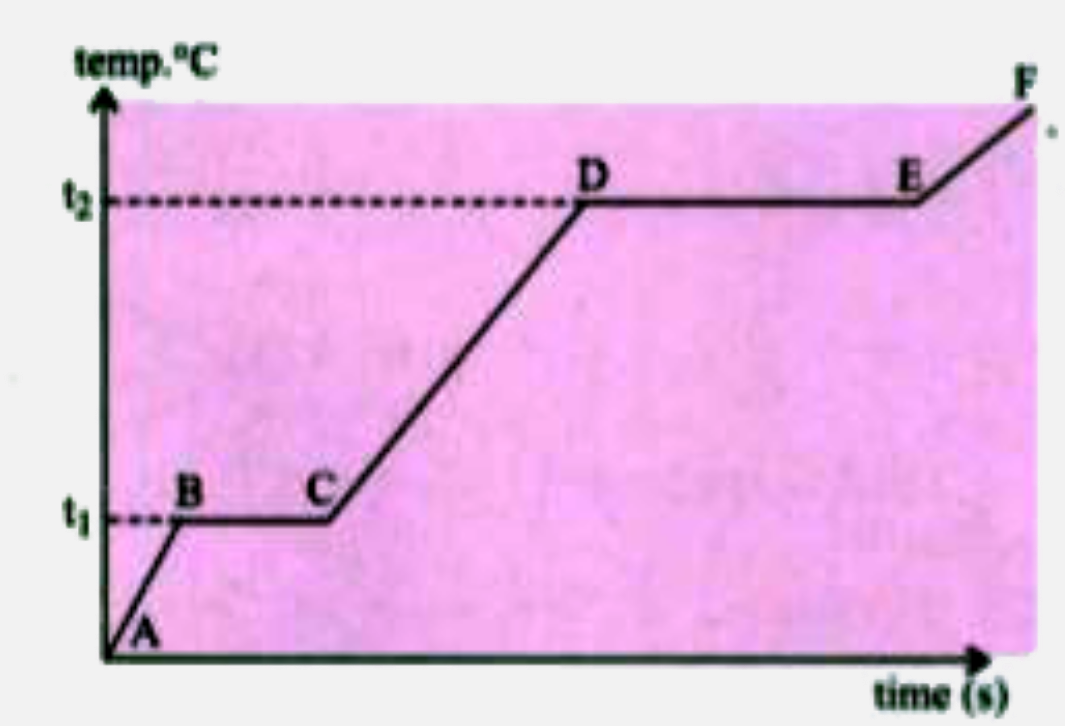Heat changes the arrangement of particles in a substance when there is a change of state.
To determine whether the statement "Heat changes the arrangement of particles in a substance when there is a change of state" is true or false, we can analyze the concept of heat and states of matter step by step.
1. Understanding States of Matter:
- Matter exists in different states: solid, liquid, and gas. Each state has a unique arrangement of particles.
- In solids, particles are closely packed and vibrate in fixed positions.
- In liquids, particles are less tightly packed and can move around each other.
- In gases, particles are far apart and move freely.
2. Effect of Heat on Solids:
- When heat is added to a solid, the energy of the particles increases.
- This increase in energy causes the particles to vibrate more vigorously.
3. Change of State from Solid to Liquid:
- As the temperature of the solid increases, it reaches a point called the melting point.
- At the melting point, the added heat causes the solid to change into a liquid.
- During this process, the arrangement of particles changes from a fixed, orderly structure to a more random arrangement.
4. Conclusion:
- Since heat causes the particles in a solid to rearrange into a liquid state, we can conclude that the statement is true.
- Therefore, the statement "Heat changes the arrangement of particles in a substance when there is a change of state" is indeed a true statement.
Final Answer:
The statement is True.
- Matter exists in different states: solid, liquid, and gas. Each state has a unique arrangement of particles.
- In solids, particles are closely packed and vibrate in fixed positions.
- In liquids, particles are less tightly packed and can move around each other.
- In gases, particles are far apart and move freely.
- When heat is added to a solid, the energy of the particles increases.
- This increase in energy causes the particles to vibrate more vigorously.
- As the temperature of the solid increases, it reaches a point called the melting point.
- At the melting point, the added heat causes the solid to change into a liquid.
- During this process, the arrangement of particles changes from a fixed, orderly structure to a more random arrangement.
- Since heat causes the particles in a solid to rearrange into a liquid state, we can conclude that the statement is true.
- Therefore, the statement "Heat changes the arrangement of particles in a substance when there is a change of state" is indeed a true statement.
The statement is True.
Topper's Solved these Questions
- HEATBOOK - ICSECHAPTER - HEATEXERCISE - EXERCISE (SECTION I) (Choose the correct option to fill in the blank.)
9 Videos
- HEATBOOK - ICSECHAPTER - HEATEXERCISE - EXERCISE (SECTION II) (Give Reason)
8 Videos
- HEATBOOK - ICSECHAPTER - HEATEXERCISE - EXERCISE (SECTION I) (Choose the correct option)
9 Videos
- FORCE AND PRESSURE : MOTION BOOK - ICSECHAPTER - FORCE AND PRESSURE : MOTION EXERCISE - EXERCISES (SECTION II) (Picture Study)
4 Videos
- LIGHT ENERGYBOOK - ICSECHAPTER - LIGHT ENERGYEXERCISE - EXERCISE (PICTURE STUDY)
10 Videos
Similar Questions
A substance which can change its state
View SolutionFill in the blanks
(a) Evaporation of a liquid at room temperature leads to a …… effect .
(b) At room temperature the forces of attraction between the particles of solid substances are …. Than those which exist in the gaseous state.
(c) The arrangement of particles is less ordered in the ... state. However, there is no order in the ..... state.
(d)....... is the change of gaseous state directly to solid state without going through the ....... state.
(e) The phenomenon of changes of a liquid into the gaseous state at any temperature below its boiling point is called ......
View Solution(a) What do you understand by the change of phase of a substance ?
(b) Is there any change in temperature during the change of phase ?
(c) Does the substance absorb or liberate any heat energy during the change of phase ?
(d) What is the name given to the energy absorbed during a phase change ?
View SolutionWhat happens to the heat supplied to a substance when the heat supplied causes no change in the temperature of the substance ?
View SolutionThe point when water changes into gaseous state.
View SolutionOne or more new substances are formed in a chemical change.
View SolutionStatement-1: The internal energy of a system does not change when there is not change in temperature
Statement-2: The internal energy of a gaseous system is state function.
View SolutionWhat happens to the heat supplied to the substance when, the heat supplied causes no change in the temperature of the substance?
View SolutionThe amount of heat absorbed or released when a unit mass changes its state ……….
View SolutionThe diagram below shows the change of phases of a substance on a temperature vs time graph on heating the substance at a constant rate.

What is the boiling and melting point of the substance ?
View Solution
